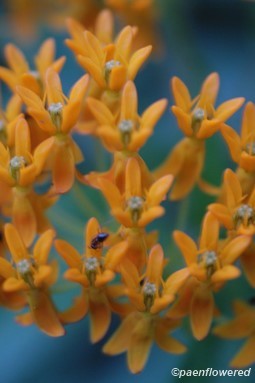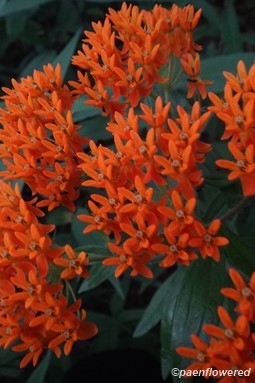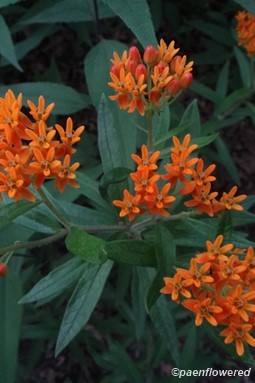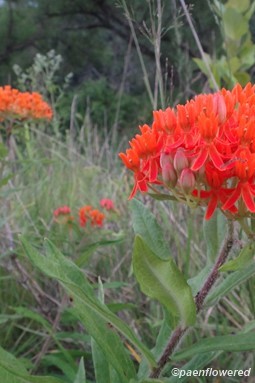Asclepias tuberosa
Asclepias tuberosa butterfly weed
This gorgeous flower starts blooming in June and persists throughout the summer attracting many kinds of butterflies. The flower is constructed such that if a butterfly or a bee find the nectar, they must pollinate the plant. The height of the plant varies depending on which habitat it grows in and can range from 1 to 3 feet. The spindle-shaped, erect seed pods form in the fall and contain dark brown seeds attached to silken, fluffy parachute structures. These parachute-like structures enable the seeds to be carried by the wind, facilitating their dispersal.
Habitat & Range
Frequent in dry fields, roadsides, and shale barrens.
Present throughout the state, with most populations in the south.
Wetland code: Not classified
Phenology
Flowers late June through August.
Characteristics
Inflorescence flat-topped ubmel, 2-5″ across; 10 to 25 flowers per umbel
Flowers yellow to orange-red; 5-parted crown: 5 downwardly reflexed petals supporting 5 vertical horns sticking out from tubular hoods bending over the shorter column (containing stames and carpels) in the center
Leaves mostly alternate or opposite on the branches, sessile
Stems erect or ascending, hairy and frequently branched above; 12 to 27″
Fruit spindle-shaped pod, erect, narrow; 3 to 6″ long; mostly smooth or with fine hairs; seeds large, brown with white silken parachute structures
Height 1 to 3′
Plant Codes
S-rank: S5 (Secure)
G-rank: G5 (Secure)
Ecology
Host plant for Monarch butterfly. Small insects and some caterpillars feed on the leaves.













Comments
Have you spotted this plant in your area? We'd love to hear about your experience! Share your comments or questions about the plant below. Comments are moderated before posting.